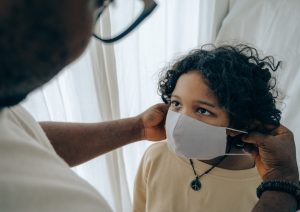LatinaLista — Not to be sexist but with all the recent gridlock in Congress it’s clear that the only solution to a more bipartisan government is to elect more women to political office.
A study published in the American Journal of Political Science earlier this year found that women actually rank as the most effective lawmakers.
Women sponsored more bills (an average of three more per Congress), cosponsored more bills (an average of 26 more per Congress), and attracted a greater number of cosponsors than their male colleagues. These new laws driven by women were not only enacted–they were popular. In a pair of additional working papers, led by Ohio State political scientists Craig Volden and Alan Wiseman, researchers tracked every bill introduced between 1981 and 2009, and found that those sponsored by women survived deeper into the legislative process, garnered more press attention, and were more likely to be deemed “important” overall.
All of which leads the authors of the AJPS paper, University of Chicago Public Policy Professor Christopher Berry and his student and Stanford doctoral candidate Sarah Anzia, to conclude that it’s the women themselves–specifically, their skills at “logrolling, agenda-setting, coalition building, and other deal-making activities”–that are responsible for the gender-performance divide.
Even with these natural abilities, female candidates are hard to find on ballots. Internationally, the US ranks 71st in terms of women’s representation.
There are a host of reasons why Latinas, and women in general, don’t run. There are several organizations around the nation focused on getting the message out that running for office doesn’t have to be a scary prospect.
One organization that has made it its mission to recruit women to run for public office is the 2012 Project. What’s unique about this campaign, done under the umbrella of Rutgers University’s Center for American Women and Politics, is that they focus on one particular age range of women whom they feel have a better chance at political success.
Milly Doolan, of The 2012 Project, explains the campaign and why this is the best time for Latinas and all women to run for office to help break the gridlock happening in Congress these days.
The 2012 election: How redistricting offers Latinas and other women a once-a-decade opportunity to increase our numbers in public office
By Milly Doolan, The 2012 ProjectEvery 10 years when new census data is released, the political world is fixated on the redistricting process and how it will reshape Congress and state legislatures. Once the process is complete, the political map shifts – incumbents retire and new seats are drawn. These new and open seats present a once-a-decade opportunity for a demographic traditionally underrepresented in politics – women.
Take one example: California gained seven new seats in 1992. Out of those seven, six women were elected into the House of Representatives. That same year, Representative Nydia Velazquez was the first Puerto Rican woman elected into Congress. She was also first to represent the newly redrawn 12th District of the state of New York. Altogether, 1992 saw 24 additional women elected into Congress and the press soon dubbed it “The Year of the Woman.”
This record number of women elected into office in 1992 was no accident. 1992 was the year of watershed events such as the Clarence Thomas hearings. It also saw a national coordinated effort by women’s groups aimed at reaching out to women to run for public office.
There was no similar effort in 2002.
The 2012 Project, a national non-partisan campaign in partnership with Rutgers’ Center for American Women and Politics, was created to inspire women to take advantage of the opportunities of redistricting.
So far, 90 bipartisan allies and more than 50 former elected officials and consultants are helping the campaign reach out to potential candidates, including MANA and the National Hispana Leadership Institute.
The campaign is specifically reaching out to baby-boomer women, those aged 45 and up, as they are ideally positioned to run. These women, typically at the top of their careers, have fewer family responsibilities and are likely to have deep roots in their communities.
The 2012 Project first aims to educate women by reaching out online and speaking at major conventions and regional meetings. The second goal is to inspire.
Former elected women, such as Polly Baca, a past vice chair of the Democratic National Campaign, share their stories about why they ran and why it makes a difference to have women involved in high-level decision making.
Finally the 2012 Project will connect women interested in running with leadership institutes, campaign training programs and fundraising networks in their states.
Women make up 51 percent of the U.S. population yet only 16 percent of the U.S. Congress. The 2012 Project understands the urgency and the opportunity of the next big election cycle. Consider yourself invited to help find great women or step forward yourself.
It’s time — Ya es tiempo — “Join us.”





